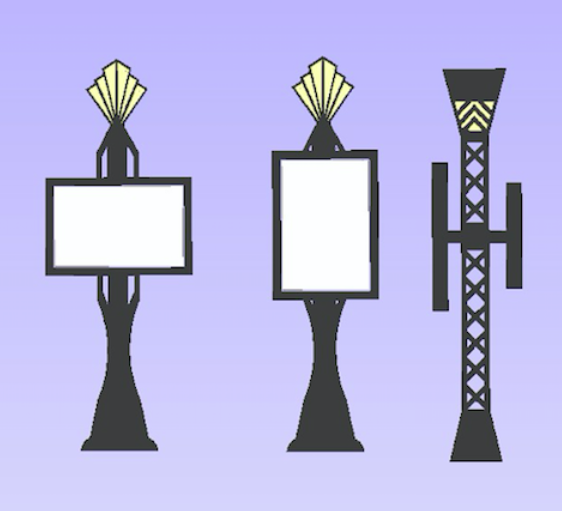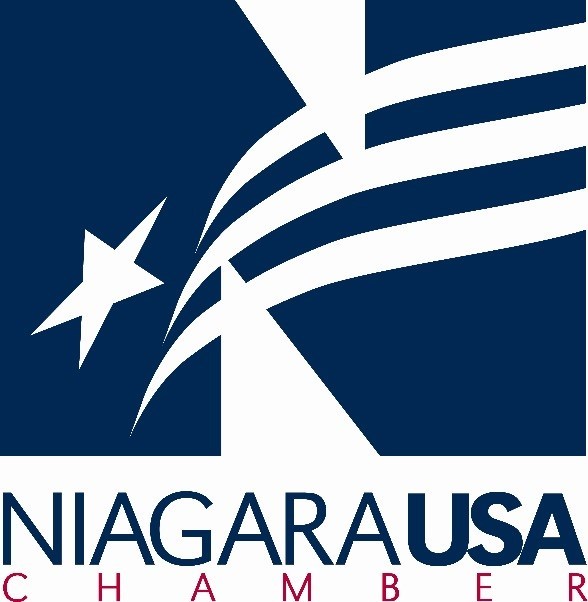Featured News - Current News - Archived News - News Categories
Seeks additional details, asks for project ownership to be clarified
By Joshua Maloni
GM/Managing Editor
Proposed metal art frames remain in limbo following Monday’s meetings of the Village of Lewiston Historic Preservation and Planning Commission boards.
The latter committee specifically asked for clarification on which entity is ultimately responsible for the project – whether it’s the Village of Lewiston, the Lewiston citizen art group or the Lewiston Council on the Arts – who will oversee installation and preservation, and where and how the frames (which could be considered signs) would be mounted.
Members voted to table the proposal until they receive their requested information.
Most of the Planning Board’s hour-long-plus conversation was debating whether or not the commission has the ability to make a recommendation on metal art frames in the first place.
At the start of the session, Chairman Norm Machelor made a point to state, “We finally got a legal opinion that what was proposed are signs. That’s it. Everything that the Planning Board will decide from this point on is going to be about what regulations we have to follow about signage. Not about art. Not about community wishes. Not about visitors. Not about a lot of things. Is the village permitted – or can we permit signs to be put somewhere in this village, and what are the rules for putting signs?”
Vice Chairwoman Doreen Albee said, “Academy Park is an open public space and it's not considered a business. There are signs that are permitted in business districts. But again, Academy Park is not a business district. There are things such as freestanding signs, which is the closest that we can get to what is proposed for these art frame signs. Again, a business can have one of those, if it’s in a business district. Again, Academy Park is not a business district.”
She read a section from the village code that states, “No signs should be erected except monuments, historic markers, or other public information or directory devices erected by a public agency, unless approval of the Board of Trustees is obtained after recommendations of the Historic Preservation/Planning Commission.”
“That, I believe, is the question that we're dealing with,” Albee said.

Metal art frame rendering by Dan Buttery.
••••••••
Machelor said the initial submission process was wrong, in that the “Lewiston Public Art Project” went to the Village Board before it was reviewed by the HPC and Planning Boards.
Trustees have already approved two-thirds of the “Lewiston Public Art Project” – a mural wrapping the Academy Park comfort station, and metal benches on or near Center Street.
When it came time for his commission to render an opinion on the metal art frames portion of the project, Machelor again expressed uncertainty as to whether or not board members could make a recommendation.
“Just to be clear, in order to put a sign in Academy Park, we're going to have to do something else besides say, ‘Yes, it's OK,’ because we don't have the authority to put anything on Academy Park. And we definitely don't have the authority to put something that's actually been designated a sign on Academy Park. So, you know, it's a tough place to start before we even get started about what they look like, how big they are, where they're going to be, what they're made out of, and a thousand other things.”
Board member Rick Haight said the section of code Albee read permits the Planning Commission to render an opinion: “I think there's a caveat in there that would allow this board to provide a recommendation to the Village Board – that ‘unless’ statement.”
He made a motion to that effect – a motion that failed when it didn’t receive a second.
Haight said, “We fought to try to get this to this board. And now we're going to say that we have to go back (and can’t make a recommendation),” he said.
Following some infighting, board member Nicholas Schaefer said he would second Haight’s motion, which was then approved by a 4-1 vote (Machelor dissented).
The HPC and Planning boards sought additional details on frame placement – both in terms of location and potential in-ground mounting. Opinions differed as to whether the frames should be limited to Academy Park and the adjoining, to-be-built bike trail; or if the signs should be spread across the village, with some in the International Peace Garden and/or Hennepin Park and the waterfront.
As to the former, Lewiston Council on the Arts Executive Director Maria Fortuna Dean said the “Lewiston Living Art Gallery” concept would call for the signs to be closer together – and not made into “a scavenger hunt.” As such, the Planning Board seemed more agreeable to keeping the metal art frames at Academy Park.
With regard to the latter, metal art fabricator Dan Buttery said each frame would be installed into its own concrete base. He spoke of encircling each foundation with brick or greenery.
If his creation is ultimately considered a sign, then safety measures would be required – particularly as it pertains to the 8-feet clearance outlined in the village code.
The Planning Board also expressed concern over the proposed bike trail’s 8-feet pathway, suggesting it is undersized relative to traditional lanes – and that is without a metal art frame included on the thoroughfare.
Buttery noted the number of proposed metal art frames was reduced from 10 to eight; that art inside the frames would be in a LEXAN case – said to be superior to Plexiglas – and lit with a low-light LED; and that a solar panel would be hidden within the frame and provide a “down light” similar to village lampposts.





























